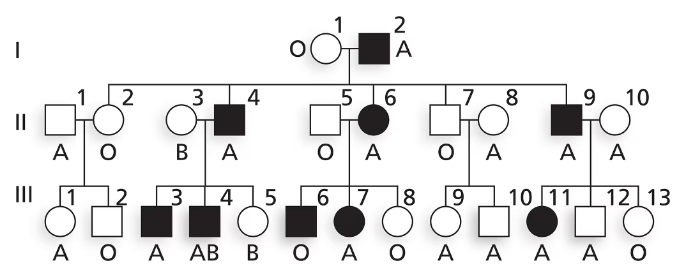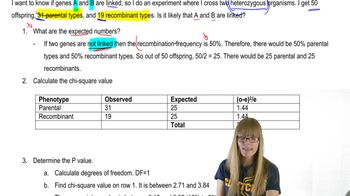Here are the essential concepts you must grasp in order to answer the question correctly.
Genetic Linkage
Genetic linkage refers to the tendency of genes located close to each other on a chromosome to be inherited together during meiosis. When two traits are genetically linked, they do not assort independently, which can be observed in pedigree analysis. If the inheritance patterns of two traits, such as nail–patella syndrome and ABO blood type, show a consistent correlation, it suggests they may be linked.
Recommended video:
Pedigree Analysis
Pedigree analysis is a diagrammatic method used to trace the inheritance of traits through generations in a family. It helps in identifying patterns of inheritance, such as autosomal dominant or recessive traits. By examining the pedigree for nail–patella syndrome and ABO blood type, one can determine if the traits are inherited together, which is crucial for assessing genetic linkage.
Recommended video:
Autosomal Inheritance
Autosomal inheritance refers to the transmission of genes located on the autosomes, which are the non-sex chromosomes. Nail–patella syndrome is an autosomal disorder, meaning it can affect both males and females equally and follows Mendelian inheritance patterns. Understanding whether the traits in question are autosomal helps clarify the expected inheritance patterns and their potential linkage.
Recommended video:







